Ultrasonic NDT
Measuring Thin Single-Layer Material Using a High- Frequency Thickness Gauge and Transducer
Published on 31st March 2022

Many handheld ultrasonic corrosion thickness gauges only use dual element transducers and have an upper frequency limit of about 10 MHz. These gauges work well for most traditional corrosion applications but have a minimum thickness of about 0.020 inches or 0.5 millimeters. In contrast, ultrasonic precision thickness gauges can use single element transducers with frequencies between 0.50 and 20 MHz. Despite having a better minimum thickness capability than corrosion gauges, these instruments are still limited in their minimum thickness capability when using 20 MHz transducers. A 20 MHz single element transducer enables thickness measurements down to about 0.006–0.008 in. (0.150–0.200 mm).
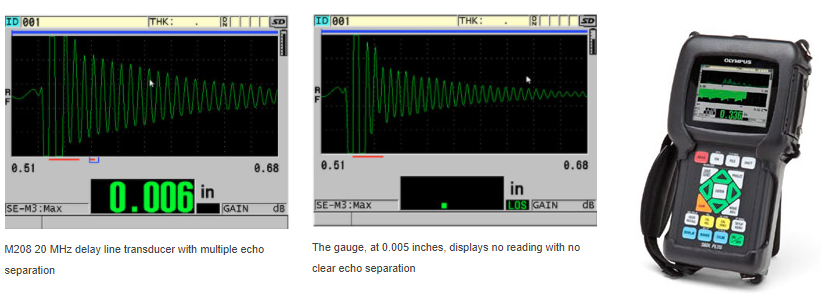
Measuring the Thickness of Thin Plastic and Metal Materials Using Ultrasonics
Measuring the thickness of plastic or metal materials thinner than 0.006 in. (0.150 mm) using ultrasonics historically required high-frequency pulser receivers, 30 MHz to 125 MHz transducers, and an oscilloscope. This equipment can be difficult to set up and required the user to manually measure the time between echoes with a digital oscilloscope, then calculate the thickness manually. For these reasons, users normally turned to other technology for these measurements.
The 72DL PLUS™ gauge using high-frequency transducers with a much shorter wavelength enables better echo separation and ultimately improved minimum thickness. These high-frequency transducers offer a significantly reduced maximum thickness range. Frequencies above 30 MHz are more easily attenuated in many materials.
High-Frequency Thickness Gauge for Measuring Ultra-Thin Materials
The 72DL PLUS ultrasonic precision thickness gauge in its standard model can use a single element transducer in the frequency range of 0.5–20 MHz. The high-frequency model can use transducers up to 125 MHz and offers a multilayer software option. Pairing the gauge with a high-frequency transducer enables thickness measurements far below the minimum thickness capability of conventional ultrasonic thickness gauges. It is possible to measure single-layer material down to approximately 0.0005 in. (0.013 mm), depending on the application.
The 72DL PLUS gauge can store transducer configurations for a full range of Olympus transducers from 0.5 to 125 MHz. Many of these default transducer configurations will work for many thickness applications. Custom applications can be created, stored, and recalled. This enables a user to easily recall a stored application, connect the correct transducer, and start making measurements. Adjustments are made via a large touch screen and a simple user interface. Once a transducer setup is created, the instrument can be used by inspectors with limited ultrasonic experience. The 72DL PLUS gauge can display direct thickness in inches, mils, millimeters, and microns.
Common High-Frequency Transducers for Thin Material Applications

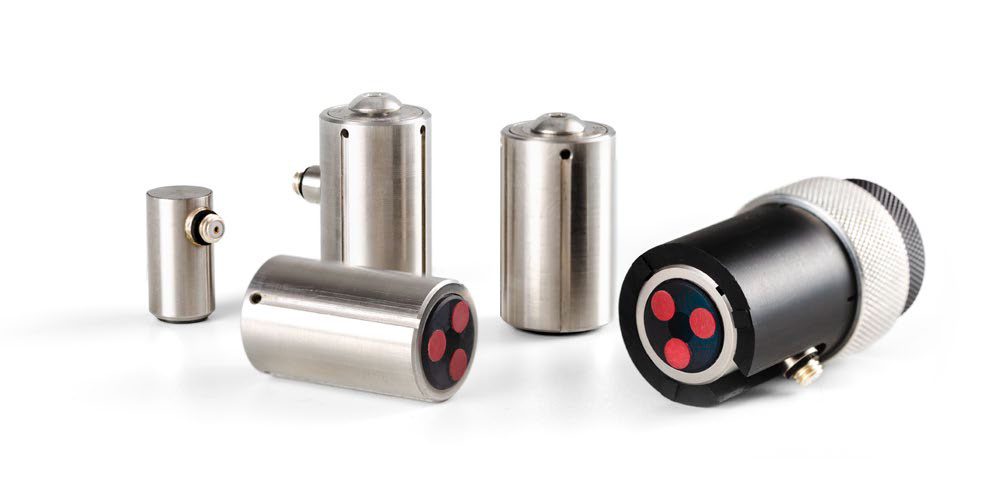
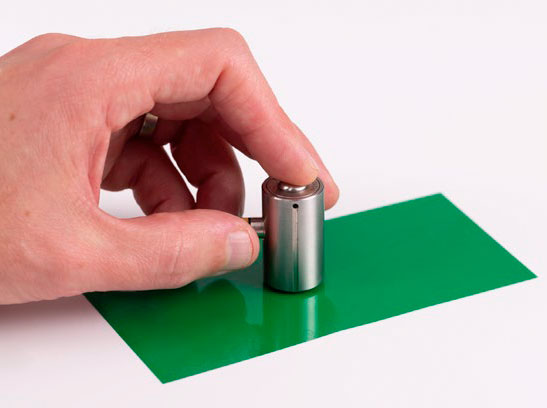
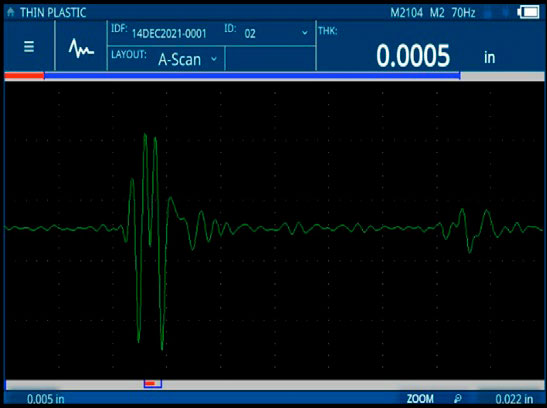
Thin plastic film 0.0005 in. (0.013 mm) thick measured using a 72DL PLUS gauge and 125 MHz M2104 offset immersion transducer in a Mode 2 measurement from the front surface to the back wall echo.
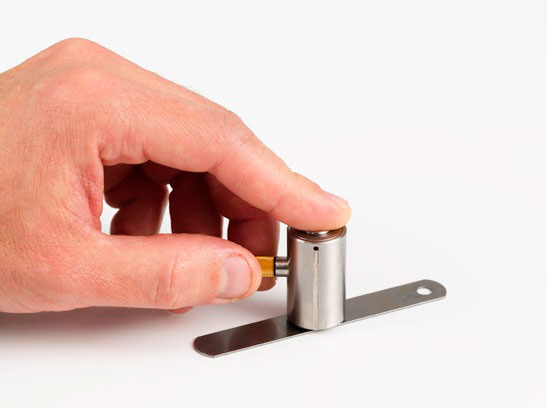
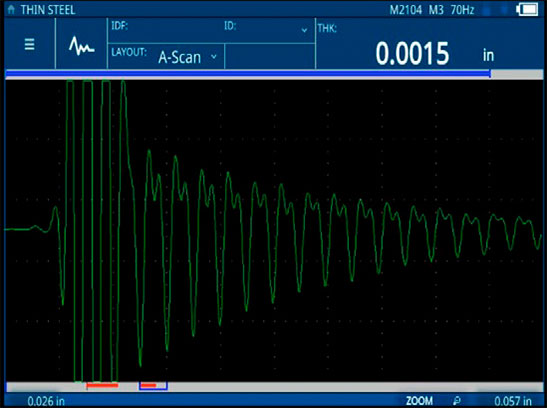
Thin steel shims 0.0015 in. (0.040 mm) thick measured using a 72DL PLUS gauge and 125 MHz M2104 offset immersion transducer in a Mode 3 measurement from multiple back wall echoes.








